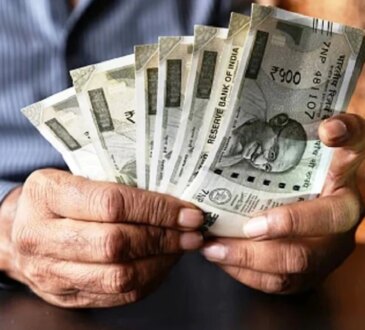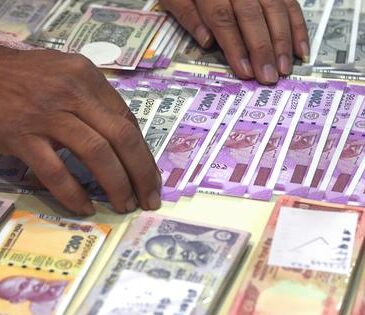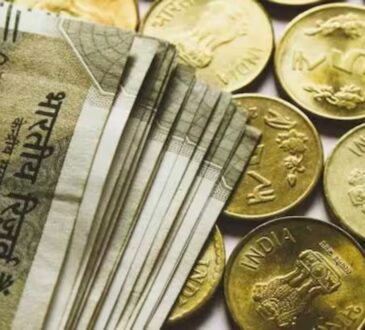Macomb, Detroit, Michigan-In the vast theater of global trade, a silent drama unfolds every day: the USA buys real goods and services from across the world, not with hard-earned commodities or gold-backed guarantees, but with paper dollars— printed in abundance, backed by confidence, and accepted globally as the world’s reserve currency.
For decades, this privilege has placed the USA in a position of unrivaled economic power. It can run persistent trade and budget deficits without suffering the traditional penalties other countries face, such as currency depreciation or reserve depletion. With over 58 percent of global central bank reserves held in dollars, according to the IMF, and more than $7.4 trillion in U.S. debt held by foreign governments, global demand for dollars allows the USA to print money and buy real value from the rest of the world. Whether it’s a smartphone from China, oil from Saudi Arabia, or pharmaceuticals from India, the USA pays for these tangible goods with freshly minted dollars— costing it virtually nothing beyond the ink and the click of a keyboard.
In addition to its ability to purchase real value with fiat currency, the USA has increasingly turned to tariffs as a second revenue stream. President Donald J. Trump’s administration has aggressively imposed tariffs on hundreds of billions’ worth of imports— primarily from China, Canada, India, the EU, and Mexico. These tariffs, averaging 15 to 25 percent, not only raise costs for exporters but also serve as a powerful fiscal tool for the US Treasury.
However, this economic privilege does not come without backlash. The drive toward de-dollarization— led by countries like China, Russia, and Brazil— is a direct response to the USA’s weaponization of its currency. US Secretary of State Marco Rubio admitted that if countries stop using the dollar, the USA would lose its ability to impose sanctions on them.
The USA currently has sanctions in place against countries with nearly a quarter of the world’s population, including China, Russia, Iran, Venezuela, Cuba, Nicaragua, Syria, and Zimbabwe restricting their ability to trade, causing domestic inflation and a collapse of industrial capacity. In response, many have begun constructing alternative financial systems, exploring cross-border payment networks independent of SWIFT, increasing bilateral trade in non-dollar currencies and offloading their dollar reserves.
Suppose, in a hypothetical but increasingly possible scenario, major global powers collectively decide to dump their dollar reserves in protest. Let us assume $4 trillion worth of reserves are released into circulation. If the USA refuses to buy back these dollars— as it has no legal obligation to do so— the entire burden shifts to open currency markets. The consequences of such a move would be swift and profound.
For the countries dumping dollars, the sudden oversupply would drive down the value of the dollar by 20 to 30 percent. Their own dollar reserves would lose value rapidly, resulting in capital losses of hundreds of billions. China alone, holding over $850 billion in U.S. debt, could see a $250–300 billion wipeout in reserve value overnight. At the same time, their national currencies would strengthen, making their exports more expensive and less competitive, thereby triggering trade slowdowns. Domestic instability and inflationary pressure would follow, especially in emerging economies.
The USA would not be immune to the fallout. As the dollar weakens, the cost of imports would rise sharply, driving domestic inflation to perhaps 5 to 7 percent annually. Interest rates would surge as the US government tries to stabilize its currency and attract debt buyers, dramatically increasing the cost of servicing the national debt. With total federal debt exceeding $34 trillion, even a modest 2 percent increase in rates could cost the USA over $600 billion annually in additional interest payments. Financial markets would face severe volatility, and the Federal Reserve would be forced into emergency interventions.
Until that transformation is realized, the world continues to subsidize the USA’s monetary empire—while it continues to collect wealth with both hands.
Both sides suffer in this scenario, but the countries dumping dollars would experience the most immediate and severe pain. The USA, due to its institutional, military, and technological advantages, would endure longer. Thus, retaliatory dumping of the dollar would amount to a self-inflicted wound.
A more strategic and potentially sustainable path would be for the world to gradually pivot away from the dollar altogether. In this scenario, over the next decade, countries form a consensus around a new reserve system— perhaps a gold-linked BRICS coin, a central bank digital currency, or a commodity-backed blockchain token. Oil is priced in yuan or a digital euro. International contracts are settled in diversified currency baskets. The reliance on a single nation’s currency would fade, distributing global financial power more equitably.
The consequences for the USA would be significant. Losing its reserve currency status would mean losing the exorbitant privilege of paying for imports with printed dollars. Demand for the dollar would contract. Inflation would rise. Interest rates would surge. Government spending would need to be curtailed or financed through real productivity, not limitless debt. Wall Street’s global supremacy would diminish, and US soft power would decline. Yet, for the rest of the world, this could mean a more balanced global trade system, one not subject to the whims of a single national monetary policy.
This raises a deeper philosophical issue: should global trade be conducted based on fiat currencies at all? A more equitable system would measure international trade not in symbolic reserve currencies, but in real economic value. A nation exporting $1 billion worth of steel, for example, should receive $1 billion worth of equally valuable goods or services— not just fiat notes that can be printed or devalued at will. This “value-for-value” model would eliminate the distortions caused by currency manipulation, inflation, and speculation. It would foster genuine reciprocity, reduce inequality, and align global trade with tangible economic contributions rather than geopolitical leverage.
Such a system would require a new global accounting architecture— perhaps enabled by artificial intelligence, digital ledgers, and multilateral oversight. While ambitious, it is not an unreachable ideal. In an age where technology is redefining commerce, communication, and currency itself, transforming how we value trade could be the next step toward a truly just economic order.
So, is the USA looting the world with both hands? Arguably, yes. One hand pays for global goods with fiat dollars backed by trust rather than labour or materials, and the other hand collects tariffs and imposes sanctions on those same suppliers. This system has allowed the USA to enjoy unmatched economic privilege while exporting inflation, volatility, and fiscal burdens to others.
Yet retaliation through abrupt de-dollarization would only heighten global instability. A gradual, deliberate creation of a new, multipolar reserve system— paired with a shift to value-based trade— offers a more sustainable path. It promises not only financial fairness but also geopolitical balance, autonomy, and mutual dignity.
Until that transformation is realized, the world continues to subsidize the USA’s monetary empire—while it continues to collect wealth with both hands.




